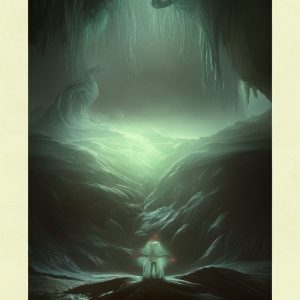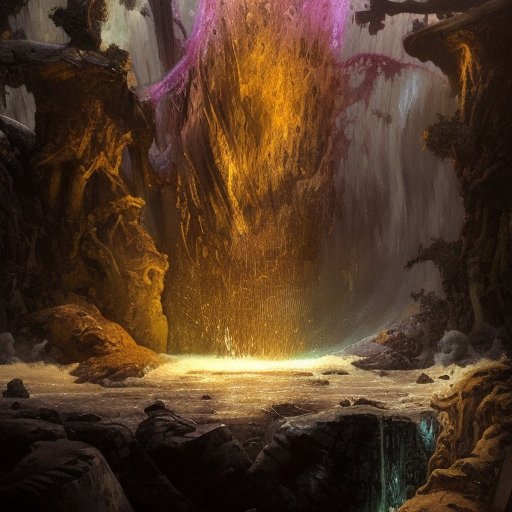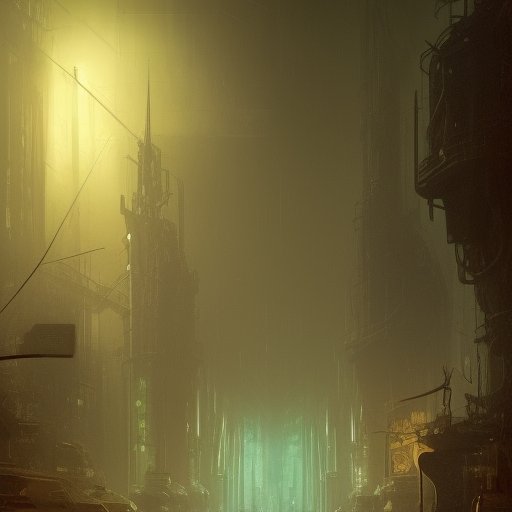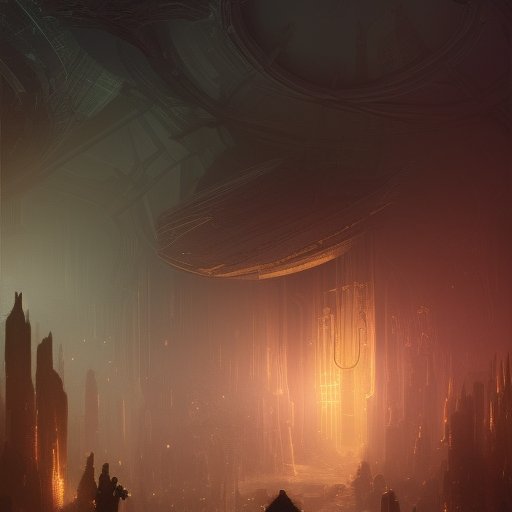
When we sleep, we enter a world that is beyond our control, a world that is often bizarre, confusing, and surreal. But what happens when we enter this unknown world of the subconscious? The science of sleep and dreams is a fascinating field that explores the mysteries of the human mind. With the help of new technologies such as brain scanning and artificial intelligence, we are learning more about the connection between our conscious and subconscious minds. This article delves into the depths of the subconscious mind and explores the many mysteries of sleep and dreaming, from the strange symbols and images of our dreams to the possibility of controlling our subconscious to create new realities.
I. Introduction
Welcome to the world of the subconscious mind – a world that is beyond the reaches of our conscious control. Every night, as we sleep, we enter a landscape that is filled with wonders, terrors, and unknown depths. The science of sleep and dreams has long captivated human interest, from the earliest philosophers to the most modern-day scientists.

Our minds are mysterious and complex, holding within them the potential for countless possibilities. Every night we enter a new frontier, a place where the rules of physics and logic do not always apply. We are free to explore the landscape of our subconscious and to experience emotions, thoughts, and sensations that our conscious selves may never experience.
But what exactly happens when we slip into the unknown world of sleep and dreams? Our brain waves change, our body relaxes, and we become vulnerable to a new reality. Dreams may be filled with symbols, deep-seated thoughts and fears, or even prophetic visions that hint at the future.
As we explore the depths of our subconscious, we uncover a whole new world that is often mysterious and surreal. But with the help of new technologies such as brain scanning and artificial intelligence, we are slowly beginning to understand the complex interplay between our conscious and subconscious minds.
Join us on a journey deep into the world of the subconscious. We will explore the science of sleep and dreams, delve into the symbols and images of our dreams, and discover the possibilities of lucid dreaming. It is a journey that is as fascinating as it is complex, as mysterious as it is beautiful. And who knows what we may discover along the way.
II. The Science of Sleep
The science of sleep is complex and fascinating, involving the interplay of countless different brainwaves that change the world around us. At the heart of it all is the delta wave – a slow, low-frequency wave that takes over our brain as we fall into a deep sleep.

As our brainwaves change, so too does our perception of time and space. Our consciousness shifts, and we begin to experience the strange and surreal world of the subconscious. Our bodies, too, undergo important processes during sleep, from the restoration of our cells and tissues to the consolidation of our memories.
But what exactly happens to our brains during sleep, and how do we navigate this strange new world? Dream research has shown that during sleep, our brains are just as active as they are during waking hours. In fact, certain regions of the brain become even more active during dreaming, hinting at the important role that dreams play in our overall cognitive function.
One of the most fascinating aspects of the science of sleep is the way in which our brainwaves can be influenced by our environment. For example, the presence of certain stimuli, such as light, sound, or temperature changes, can alter our heart rate and brain activity during sleep. This, in turn, can affect the content and intensity of our dreams.
As we discover more about the science of sleep, we are beginning to understand just how much it affects our daily lives. Poor sleep can lead to a whole host of negative health consequences, from reduced cognitive function to an increased risk of chronic illness. By understanding the complex interplay of our brainwaves during sleep, we may be able to unlock new treatments and therapies for those who struggle with sleep disorders.
So the next time you drift off into the depths of the subconscious, remember that there’s a whole world of science happening in your brain. And who knows – you might just discover something new and fascinating about yourself on the way.
III. Dreams and Reality
Dreams are more than just random images or thoughts that occur during sleep. They are a complex and mysterious connection between our conscious and subconscious minds. Our dreams are influenced by our waking thoughts, fears, and experiences, as well as our subconscious desires and emotions.

As we enter the world of our dreams, we are transported to a place where the laws of physics and reality can be bent or broken, making for an otherworldly experience that leaves us questioning what is real and what is not. When we dream, our minds create a story or scenario that pulls together diverse connections, experiences, and memories to create a cohesive narrative. Without the constraints of reality, our imaginations are free to roam and take us on a journey that is both unpredictable and surreal.
What is more, our dreams can have an impact on our waking lives, shaping our moods and perceptions long after we wake up. They can also serve as a reminder of unfulfilled desires, unsolved problems in our lives, or repressed emotions that we need to confront.
As science delves deeper into the mind, the connections between our conscious and subconscious worlds become more and more clear. We are learning that our thoughts and emotions are deeply interconnected and that our subconscious mind plays a crucial role in shaping who we are and how we perceive the world around us.
The relationship between our waking and dreaming minds is complex and mysterious, and it invites us to explore the depths of our own experiences and emotions. Our dreams may hold the key to unlocking hidden thoughts and desires, providing us with a window into the true nature of our subconscious selves. As we continue to explore the mysteries of our own minds, we open up a world of possibilities for self-discovery and understanding that is truly limitless.
IV. Dream Interpretation
Dreams are full of symbols, archetypes, and images that can be difficult to interpret. These symbols and images can range from the mundane, such as flying or falling, to the obscure, such as strange creatures or symbols that feel foreign to us. But what do these symbols and images really mean?

Interpretation of dreams has been a part of human history for centuries, with cultures all around the world assigning deep meaning and significance to the symbols found in dreams. Freud, Jung, and other modern-day psychoanalysts have developed theories about the interpretation of dreams, and with the help of new technologies and studies, we continue to develop a deeper understanding of what our dreams may be trying to communicate.
One of the most common symbols found in dreams is water. Water can represent everything from the unconscious mind to emotional turmoil, and understanding the context in which water appears can give insight into what the dream may be trying to communicate. Other common symbols include death, which can represent change and transformation, or falling, which represents a loss of control or fear.
Of course, dream interpretation is not an exact science. What one symbol may mean for one person may be something different for another. It is important to look at the context of the dream, the emotions that are experienced, and any personal associations that may be present to gain the most accurate interpretation.
Despite the complexity of dream interpretation, the study of dreams and their symbols continues to fascinate many people. Whether we turn to Freud, Jung or our own personal associations, interpreting our dreams can offer insight into our deepest thoughts, fears, and desires. As we continue to explore the depths of sleep and dreams, who knows what hidden truths we may uncover.
V. The Future of Dreaming
The future of dreaming is a world of endless possibilities, limited only by our imagination. As new technologies continue to emerge, we are beginning to unlock the potential of the subconscious mind in incredible ways.

One technology that is already being used to explore the depths of the subconscious is brain scanning. With functional magnetic resonance imaging (fMRI) and electroencephalography (EEG), researchers are able to track the activity in our brains during sleep and dream cycles. By mapping out the neural pathways of our subconscious, we may be able to uncover new insights into the nature of our dreams and the inner workings of our minds.
Another technology that holds great promise for the future of dreaming is virtual reality (VR). With VR headsets becoming more affordable and accessible, it is now possible to create custom dream landscapes and environments that can be experienced in vivid detail. By creating a fully-immersive dream environment, we may be able to explore our subconscious in new and exciting ways.
One of the most tantalizing prospects for the future of dreaming is the possibility of lucid dreaming. With the help of special devices that can track our sleep cycles and monitor our brain activity, it may be possible to induce a lucid dream state where we can control our dreams and create any reality we desire. This would allow us to experience new worlds, meet strange beings, and explore the depths of our subconscious in ways that are currently unimaginable.
As new technologies emerge and our understanding of the subconscious deepens, the future of dreaming looks more exciting than ever. It is a world where anything is possible, where our wildest dreams can become a reality. And who knows what we may discover along the way.
VI. Lucid Dreaming
Lucid dreaming – the very idea of it is intoxicating – imagine being able to control your dreams, to navigate through a world of your own creation. It’s a fascinating concept that has captured the imagination of dreamers and scientists alike for centuries. But what exactly is lucid dreaming, and can we truly harness the power of our subconscious to create new realities?

Lucid dreaming is a state where the dreamer is aware that they are dreaming, and can control their actions within the dream. It’s a state that is often accompanied by a feeling of wonder and exhilaration – as if the dreamer has been granted the key to a whole new world of possibilities.
But how do we go about having lucid dreams? First, we must train our minds to recognize the signs that we are dreaming. For some, this may involve setting an intention before sleep, while for others it may involve reality checks throughout the day. Once we become aware that we are dreaming, we can begin to control the dream.
In lucid dreams, our subconscious minds are at work, creating everything from landscapes to characters to emotions. With practice, we can learn to manipulate our dreams, creating new realities that open up endless possibilities. We can fly, breathe underwater, or even change the laws of physics to our liking.
But lucid dreaming is more than just a fun pastime – it has the potential for real-world applications. Athletes and musicians have used lucid dreaming to improve their skills, while therapists have used it to help people overcome their fears and phobias. It’s a tool that can be harnessed to tap into the full potential of our minds.
VII. Nightmares
But as fascinating as the world of the subconscious can be, it can also be a dark and frightening place. Nightmares are a common occurrence that every person experiences at some point in their life. These terrifying dreams can leave us shaken and filled with fear long after we wake up.

The things that we fear the most often manifest themselves in our nightmares. Whether it’s a fear of failure, death, or the unknown, our subconscious mind can use our worst imaginings to create a horror show that is tailored to our individual fears.
Nightmares can be emotionally and mentally exhausting, and they can even impact our health. Repeated nightmares can lead to anxiety, depression, and even post-traumatic stress disorder in some cases.
Scientists believe that nightmares serve as a way for our subconscious to process traumatic events and challenging emotions that may be too difficult for our conscious minds to deal with. But when nightmares start to become intense, frequent, or begin to impact daily life, it may be time to seek professional help.
The science of nightmares is an ongoing exploration, with new theories emerging all the time. But what is clear is that our subconscious can be a scary and bewildering place, filled with hidden fears and memories that we may not even be aware of on a conscious level.
So next time you wake up in a cold sweat after a nightmare, remember that it is simply your subconscious trying to process and work through some of the more challenging aspects of life. It may not always be pleasant, but it is a necessary part of the human experience.
VIII. Conclusion
As we come to the end of our journey through the science of sleep and dreams, it is clear that the subconscious mind holds within it a vast wellspring of mystery and opportunity. From the symbols and images that populate our dreams to the possibility of controlling our subconscious to create new realities, the world of the subconscious is a place of wonder and exploration.

Perhaps the most important lesson that we can learn from the science of sleep and dreams is to embrace the unknown. In a world that is so often defined by what we know and what we can measure, the subconscious mind reminds us that there will always be mysteries that we may never fully understand.
But rather than fearing what we do not know, we can choose to embrace it, to revel in the possibilities that lie just beyond our reach. For in the unknown lies the potential for growth, for discovery, and for wonder.
So as we move forward, let us remember to embrace the unknown world of the subconscious mind. Let us continue to explore the depths of our own minds, and to discover the amazing possibilities that lie within us.
The science of sleep and dreams has only just scratched the surface of what is possible, and the future holds within it limitless potential. Let us go forward with an open mind and an unquenchable curiosity, ready to explore the mysteries of the subconscious mind and uncover the incredible truths that lie hidden within us all.






